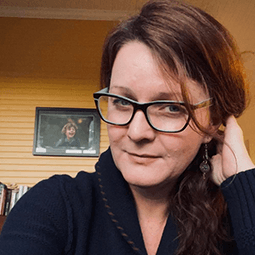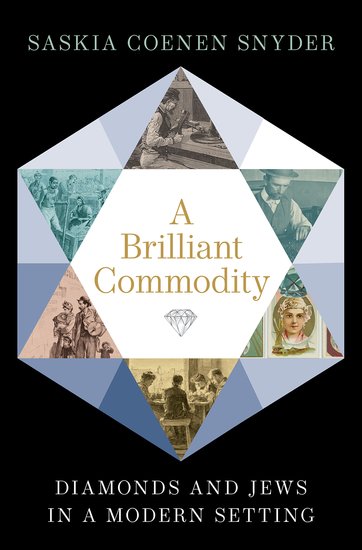Department of History
- SC.edu
- Study
- Colleges and Schools
- Arts and Sciences
- Department of History
- Our People
- Directory
- Saskia Coenen Snyder
Directory
Saskia Coenen Snyder
| Title: | Professor |
| Department: | History McCausland College of Arts and Sciences |
| Email: | SaskiaCS@sc.edu |
| Phone: | 803-777-7472 |
| Office: | Gambrell Hall, Room 139 |
| Resources: | Curriculum Vitae [pdf] Jewish Studies Program |

Education
- B.A. University of Utrecht, The Netherlands
- M.A. University of Utrecht, The Netherlands
- Ph.D. University of Michigan
Bio
Professor Coenen Snyder teaches modern Jewish history and European civilizations courses, as well as a specialized senior seminars on the Holocaust, the History of Anne Frank, and Jewish History in the American South. A recipient of the Michael Mungo Undergraduate Teaching Award, she also offers graduate courses in nineteenth-century European history, material culture, and dissertation prospectus writing.
Professor Coenen Snyder is a core faculty member and Director of the Jewish Studies
Program at USC, which introduces undergraduate students to Jewish history, literature,
religion, politics, and culture. Her own interests lie particularly in the relationship
between material culture and modern Jewish history. Her first book, a comparative
study of synagogue building and synagogue architecture in Amsterdam, London, Paris,
and Berlin explored how Jewish religious edifices became central to the public face of Judaism. Building a Public Judaism: Synagogues and Jewish Identity in Nineteenth-Century Europe crossed the conceptual boundaries of history, architecture, and urban studies, and
was published by Harvard University Press in 2013.
Her second book, A Brilliant Commodity: Diamonds and Jews in a Modern Setting (Oxford University Press, 2023) examines the role of Jewish merchants, diamantairs, cutters and polishers in the late-nineteenth century transatlantic diamond trade. After the 1869 discovery of vast diamond deposits in South Africa, the international market in precious stones boomed and matured. These discoveries, in conjunction with the growth of bourgeois consumer markets, technological innovations, and effective advertising, drove the global gem trade to new heights. The book follows rough stones from mine to market; from the moment of extraction in South-African diamond mines to the manufacturing process in Amsterdam; from the centralized London Diamond Syndicate to the lapels and décolletés of the nouveau riches eager to flaunt their new affluence. This investigation is simultaneously global and local, tracing how precious stones reached across lines of class, culture, politics, and ethnicity. The Hadassah-Brandeis Institute Research Award, the Memorial Foundation of Jewish Culture Research Grant (New York), and USC's Advanced Support for Innovative Research Excellence (ASPIRE) and Humanities grants permitted archival visits on three different continents to amass material. A Fellowship-in-Residence at the Netherlands Institute for Advanced Study in Amsterdam provided time and resources for this book to be written.
She has also completed book chapters on European Jewish history in the edited volumes City Limits: Interdisciplinary Essays on the Historical European City (McGill-Queen University Press, 2011), Jewish and Non-Jewish Spaces in the Urban Context (Neofelis Verlag, 2015), and Re-examining the Jews of Modern France: Images and Identities (Brill 2016). Her journal articles have appeared in Jewish History (2012), Studies in Contemporary Jewry (2017), Jewish Social Studies (Winter 2017), Shofar: An Interdisciplinary Journal of Jewish Studies (2020), and History Today (forthcoming)
Activities
Her third book project, tentatively titled “War Gems: The Diamond Industry in Nazi-Occupied Europe,” takes the analysis of Jews and diamonds into the twentieth century.
As genocidal plans materialized with horrifying efficiency in 1942, two central Nazi aims came into conflict. Maximizing economic profit (1) required Jewish expertise in cutting and polishing stones – skills that had been passed on for centuries. However, making Europe Judenrein (2) meant the annihilation of each and every Jewish person, filling the coffers of the Vaterland. How to reconcile racial ideology and economic policy?
This research investigates the tensions between racial ideology and economic exploitation in Nazi-occupied Europe. “War Gems” illuminates the extent and depth of Nazi plunder, not merely of existing company inventories, but of entire industries, networks, and expertise across borders. This project takes the story of gemstones through the upheavals of the 1940s into a virtually unexplored field of Nazi guile and criminality.
A 2023 Conny Kristel Fellowship at the European Holocaust Research Infrastructure (EHRI), funded by the European Union, allowed for research at the Netherlands Institute for War Documentation (NIOD) in Amsterdam. There Coenen Snyder mined archival collections to craft an unexplored history of diamonds during WWII—the setting for the most tragic era in Jewish history, and for a global realignment in the links of the diamond commodity chain.